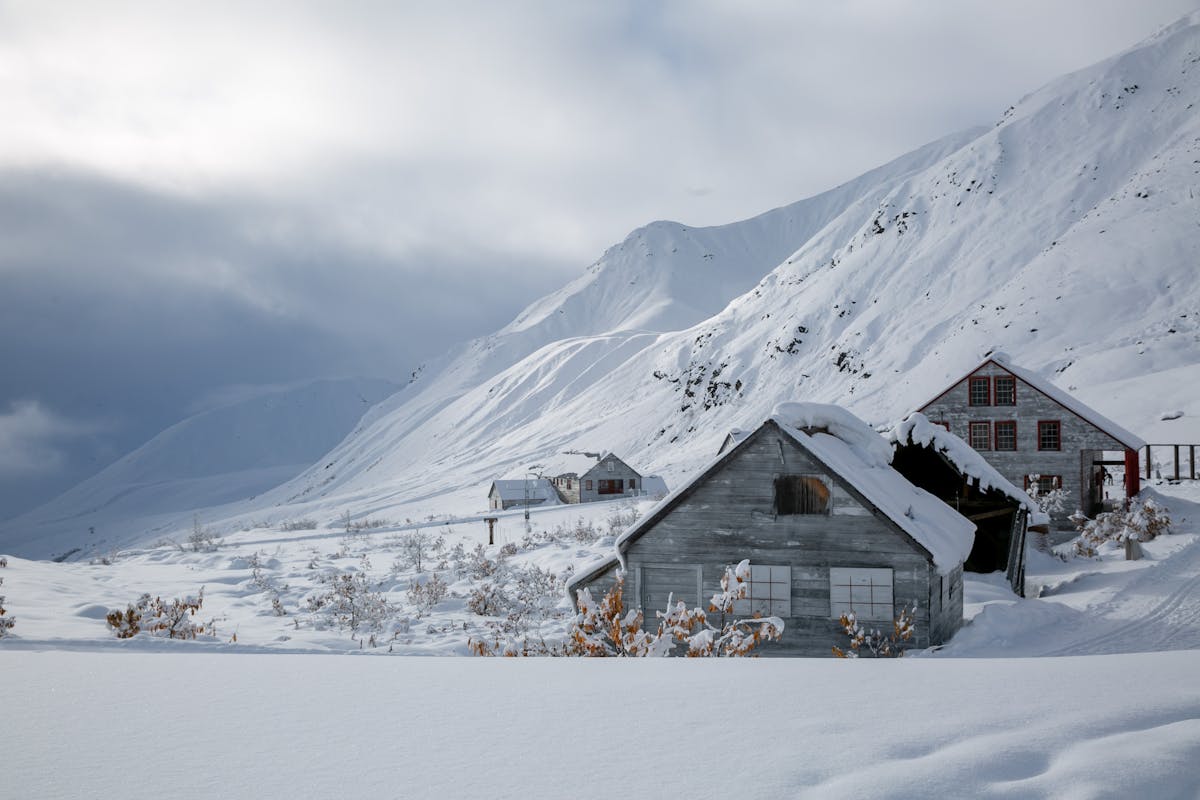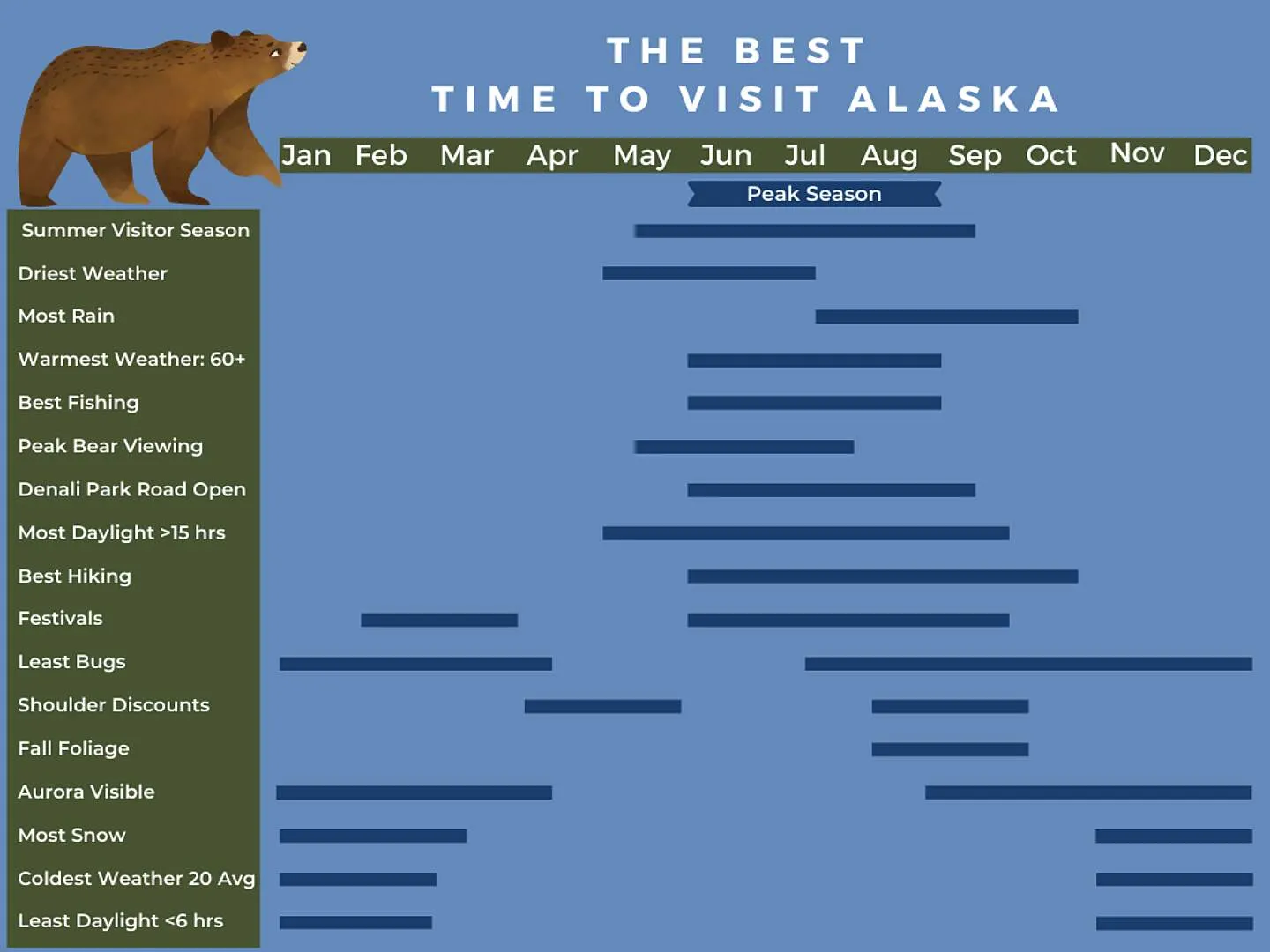Planning a trip to the Last Frontier is exciting, but deciding what season should you visit Alaska can feel overwhelming. Unlike many destinations with a single “best” time, Alaska offers vastly different, yet equally compelling, experiences throughout the year. Your ideal travel window depends entirely on what you hope to see and do, from chasing the elusive Northern Lights to basking under the perpetual glow of the Midnight Sun. Let’s break down the distinct personalities of Alaska’s seasons to help you pinpoint the perfect time for your adventure.
Understanding Alaska’s Seasonal Variations
Alaska’s location near the Arctic Circle means its seasons are dramatic and profoundly impact everything from daylight hours and temperatures to wildlife activity and available tours. While the original text focuses primarily on summer, understanding the nuances of spring, fall, and winter is crucial for making an informed decision about what season should you visit Alaska. Each period presents unique opportunities and challenges, catering to different interests and travel styles.

Summer: The Peak Season (Late May to Early September)
Often considered the most popular time, summer in Alaska, particularly from mid-June to mid-July, is when the state truly comes alive. This is the period highlighted as the “best” in the original article, and for good reason. Temperatures are warmest, daylight is maximized, and the natural world is in full swing.
Weather and Daylight
Expect daytime temperatures ranging from 60°F to 80°F, with nights cooling into the 40s-50s°F. May and September are cooler, potentially 5-10 degrees lower. May is typically the driest month, with increasing chances of rain as summer progresses towards September. The most striking feature is the daylight: near 24 hours around the Summer Solstice (June 21), offering endless opportunities for exploration under the Midnight Sun.
Wildlife and Activities
Summer is prime time for wildlife viewing. Brown and black bears are active, marine life like humpback whales are prevalent, and moose are easily spotted. Fishing is excellent throughout the summer months. Hiking trails at lower elevations are usually clear by May, with mountain trails becoming accessible in June. This season is ideal for cruising, hiking, fishing, flightseeing, and visiting national parks when facilities are fully operational.
 Calendar infographic showing the best season to visit Alaska for various activitiesSee how the peak summer season aligns with popular Alaska activities.
Calendar infographic showing the best season to visit Alaska for various activitiesSee how the peak summer season aligns with popular Alaska activities.
Considerations for Summer Travel
While summer is vibrant, it’s also the most crowded and expensive time to visit. Popular tours and accommodations book up far in advance. Mosquitoes can be prevalent from early June to early August, though they typically die off by mid-August. If seeing the Northern Lights is a priority, summer isn’t the time, as it simply doesn’t get dark enough. For a blend of summer activities and a chance to see the Aurora, the late shoulder season (late August to early September) might work.
Fall: The Shoulder Season (September to November)
As summer wanes, Alaska transitions into a beautiful, often overlooked season. Fall offers unique experiences for those contemplating what season should you visit Alaska for fewer crowds and stunning scenery.
Weather and Daylight
Temperatures drop significantly in fall, ranging from 30s-50s°F. Daylight hours decrease rapidly after September, leading to darker nights. Rain and eventually snow become more common, especially in later fall.
Wildlife and Activities
Wildlife is still active in early fall, particularly during salmon runs. Fall foliage peaks from mid-August to mid-September, creating spectacular landscapes, especially in tundra areas. As the nights grow longer, September marks the return of opportunities to see the Aurora Borealis. Many summer tours and lodges begin closing down in mid-September.
Considerations for Fall Travel
Fall offers fewer crowds and potentially lower prices than summer. However, tour availability is limited, and weather can be unpredictable, with possibilities of early snowstorms. If you prioritize seeing wildlife in large numbers or participating in a wide range of summer activities, fall might not be the best choice.
Winter: The Season of Lights and Snow (December to March)
Winter in Alaska is a magical, though challenging, time to visit. For those whose primary goal is experiencing the Aurora Borealis or classic winter activities, determining what season should you visit Alaska points directly to these cold, dark months.
Weather and Daylight
Winter is characterized by cold temperatures, often well below freezing (0°F and colder are common). Daylight hours are minimal, particularly around the Winter Solstice in December, when some areas experience only a few hours of twilight. Snow blankets much of the state, creating a pristine, white landscape.
Wildlife and Activities
While some wildlife hibernates or migrates, you can still spot moose, caribou, and predators adapted to the cold. This is the absolute best time to see the Northern Lights, thanks to the long, dark nights, especially in interior and northern Alaska. Winter activities like dog sledding, cross-country skiing, ice fishing, and snowmachining (snowmobiling) are popular. Visiting towns like Fairbanks offers unique winter festivals and easy access to Aurora viewing spots.
Considerations for Winter Travel
Winter travel requires preparation for extreme cold and potential travel disruptions due to weather. Many roads outside main routes may be closed, and tourism infrastructure is significantly reduced compared to summer. However, for those seeking solitude, stunning snowy landscapes, and the highest probability of witnessing the Aurora, winter is unparalleled.
Spring: The Season of Awakening (April to Late May)
Spring in Alaska is a period of transition, as the state thaws from its winter slumber. It’s a time of increasing daylight and returning life, offering a unique perspective for travelers considering what season should you visit Alaska.

Weather and Daylight
Temperatures gradually rise, ranging from 20s-40s°F in early spring to 40s-60s°F by late May. Daylight hours increase dramatically. While snow persists in many areas, especially at higher elevations, lower areas begin to melt, leading to muddy conditions (“breakup”).
Wildlife and Activities
Wildlife becomes more active as food sources reappear. Gray whales migrate north along the coast in March/April. Bears emerge from hibernation later in spring. Some hiking trails start clearing, particularly near coastal areas. Opportunities to see the Northern Lights diminish rapidly as daylight increases, though early spring (April) can still offer some viewing chances.
What to Eat in Fort Worth – A Culinary Deep Dive
Discover the Top Restaurants in Denver – A Culinary Journey
Discover Where to Visit in Las Vegas
Considerations for Spring Travel
Spring can be a muddy season, making some outdoor activities challenging. Tour availability increases towards late spring but is still limited compared to summer. However, it offers a chance to see the landscape transform, witness returning wildlife, and experience fewer crowds than peak season. It’s a shoulder season offering a blend of winter’s quiet and summer’s awakening.
Deciding What Season Should You Visit Alaska
Ultimately, the decision of what season should you visit Alaska comes down to aligning your interests with the state’s seasonal offerings.
- For classic Alaska experiences, maximum daylight, ease of travel, and abundant wildlife: Choose Summer (June-August).
- For stunning fall colors, fewer crowds, and a chance to see the early Aurora: Consider Fall (September).
- For the best chance to see the Northern Lights, dog sledding, and a true winter wonderland experience: Opt for Winter (December-March).
- For witnessing the transition, returning wildlife, and increasing daylight before the crowds arrive: Explore Spring (April-May).
Each season reveals a different facet of Alaska’s wild beauty. By understanding what each time of year entails, you can confidently choose the period that promises your most memorable Alaskan adventure.
Frequently Asked Questions (FAQ)
What is the absolute best month to visit Alaska?
While “best” is subjective, mid-June to mid-July is often considered the peak of summer, offering the warmest weather, most daylight, and peak activity for many tours and wildlife.
When can I see the Northern Lights in Alaska?
The best time to see the Northern Lights (Aurora Borealis) is during the dark months, typically from September to March. Interior Alaska offers the best viewing opportunities.
When is the cheapest time to visit Alaska?
The cheapest time is typically during the off-season winter months (November-March), excluding holidays. Shoulder seasons like April-May and late September-October can also offer lower prices than peak summer.
When is the driest month in Alaska?
May is generally considered the driest month across much of Alaska.
When are the mosquitoes worst in Alaska?
Mosquitoes are most active from early June to early August. They tend to die off by mid-August.
Can I see wildlife year-round in Alaska?
Some wildlife like moose and caribou can be seen year-round. However, summer (May-September) offers the best opportunity to see a wide variety of animals, including bears and migrating whales.
